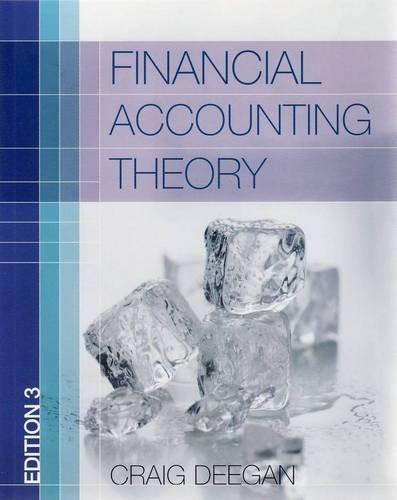Question
1. The statement of cash flows: is a required financial statement are not required by IFRS has ten sections is an optional financial statement 2.
1. The statement of cash flows:
is a required financial statement
are not required by IFRS
has ten sections
is an optional financial statement
2. Match each of these types of transactions with the corresponding flow of cash
Cash paid to suppliers for inventory [cash outflow or cash inflow]
Cash from customers for services [cash outflow or cash inflow]
Cash paid to employees for wages [cash outflow or cash inflow]
Dividends and Interest Received [cash outflow or cash inflow]
3. Match each of these types of transactions with the corresponding flow of cash
Purchase property, plant, and equipment [cash outflow or cash inflow]
Sale of property, plant, and equipment [cash outflow or cash inflow]
Make loans to other companies [cash outflow or cash inflow]
Purchase investments in debt or equity securities of other companies [cash outflow or cash inflow]
4. Match each of these types of transactions with the corresponding type of cash flow
Make loans to other companies [operating, financing, investing]
Taking out a loan [operating, financing, investing]
Paying back a loan (just the principal [operating, financing, investing]
Paying suppliers for inventory [operating, financing, investing]
Paying utilities [operating, financing, investing]
5. Match each of these types of transactions with the corresponding type of cash flow
Purchase property, plant, and equipment [operating, financing, investing]
Paying dividends[operating, financing, investing]
Receiving money for sale of goods to customers [operating, financing, investing]
6. The three types of cash flows are operating, investing and (9 letters)
7. An analyst computes the current ratio, the quick ratio, and the operating cash-flow-to-cureent liabilities ratio. This analyst is interested in
Profitability
Liquidity
Common stockholder ratios
Solvency
8. An analyst computes the time-interest-earned and operating-cash-flow-to-capital-expenditures ratio as well as the debt-to-equity ratio. The analyst is interested in.
Profitability
Liquidity
Common stockholder ratios
Solvency
9. Dividends per share divided by earnings per share is the formula for the
Profit margin
Earnings per share
Price/earnings ratio
Dividend payout ratio
10. A bakery that is open every day of the year should have an inventory turnover of
12
30
100
365
11. Net income was $50; net sales are $ 1,000 and total assets are $2,000. In vertical analysis of the income statement, net income is
5%
25%
50%
2.5%
12. Sales for 2015 were $150,000. In 2016 sales were $260,000, and 2017 sales were $270,000. Using trend analysis, what is the (rounded) trend percentage for 2017?
56%
96%
104%
180%
Step by Step Solution
There are 3 Steps involved in it
Step: 1

Get Instant Access to Expert-Tailored Solutions
See step-by-step solutions with expert insights and AI powered tools for academic success
Step: 2

Step: 3

Ace Your Homework with AI
Get the answers you need in no time with our AI-driven, step-by-step assistance
Get Started


